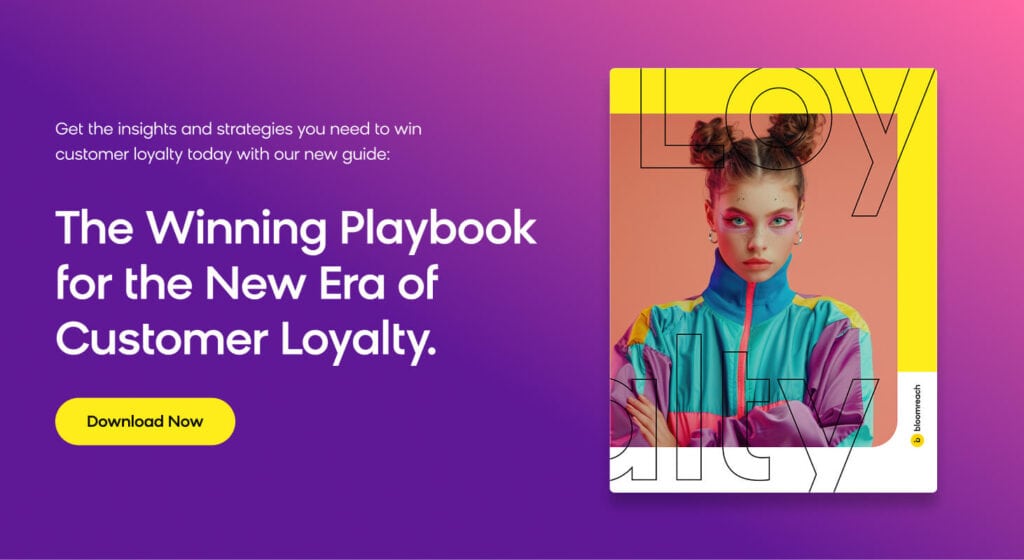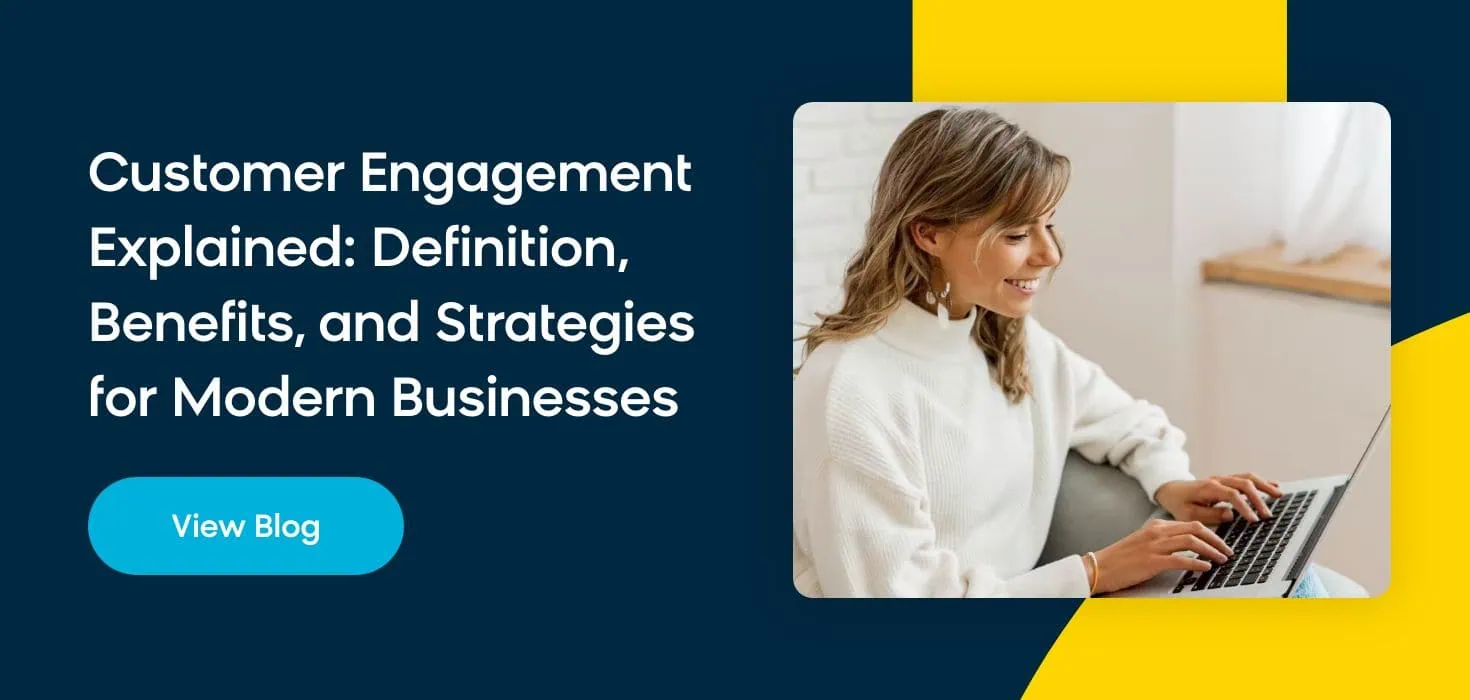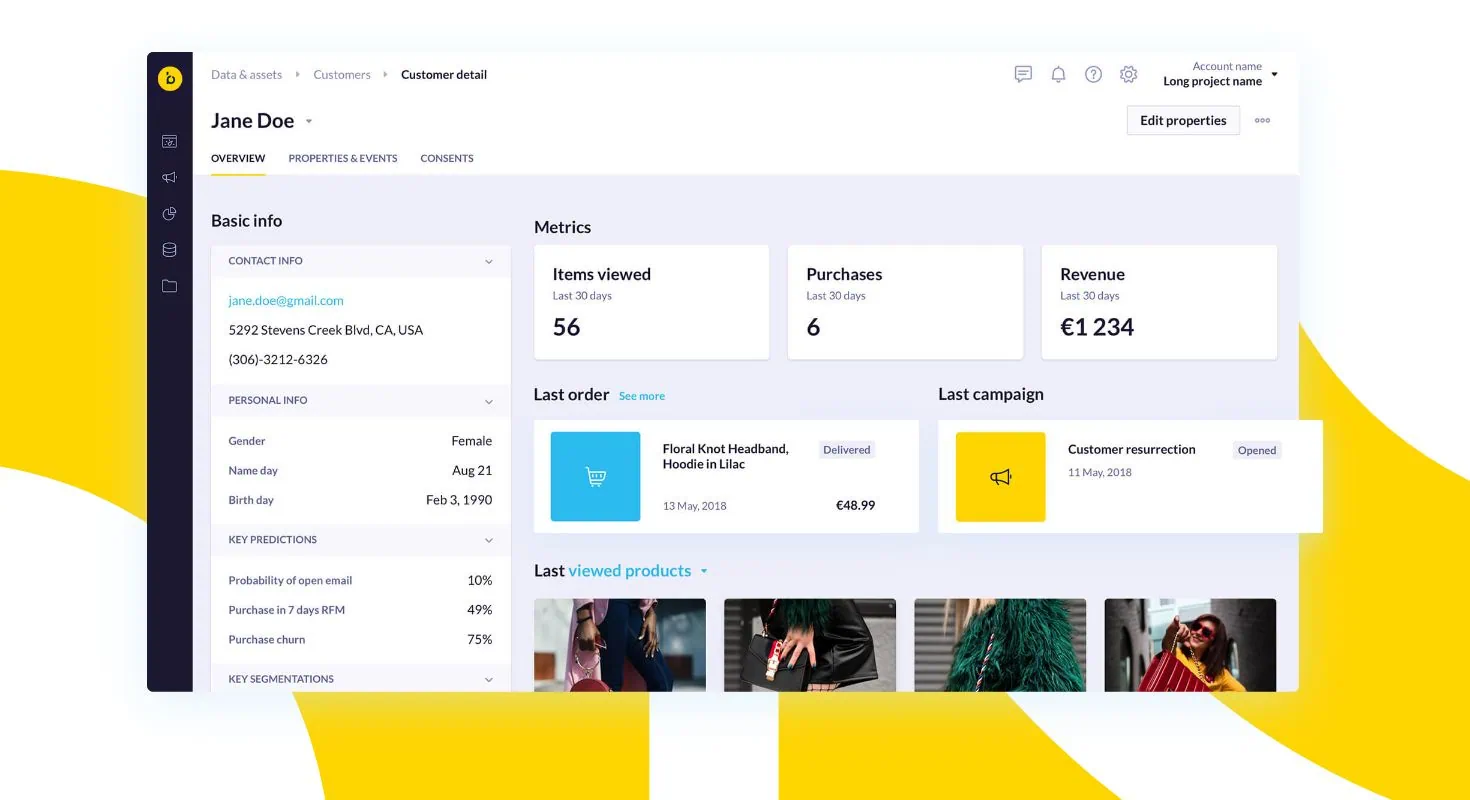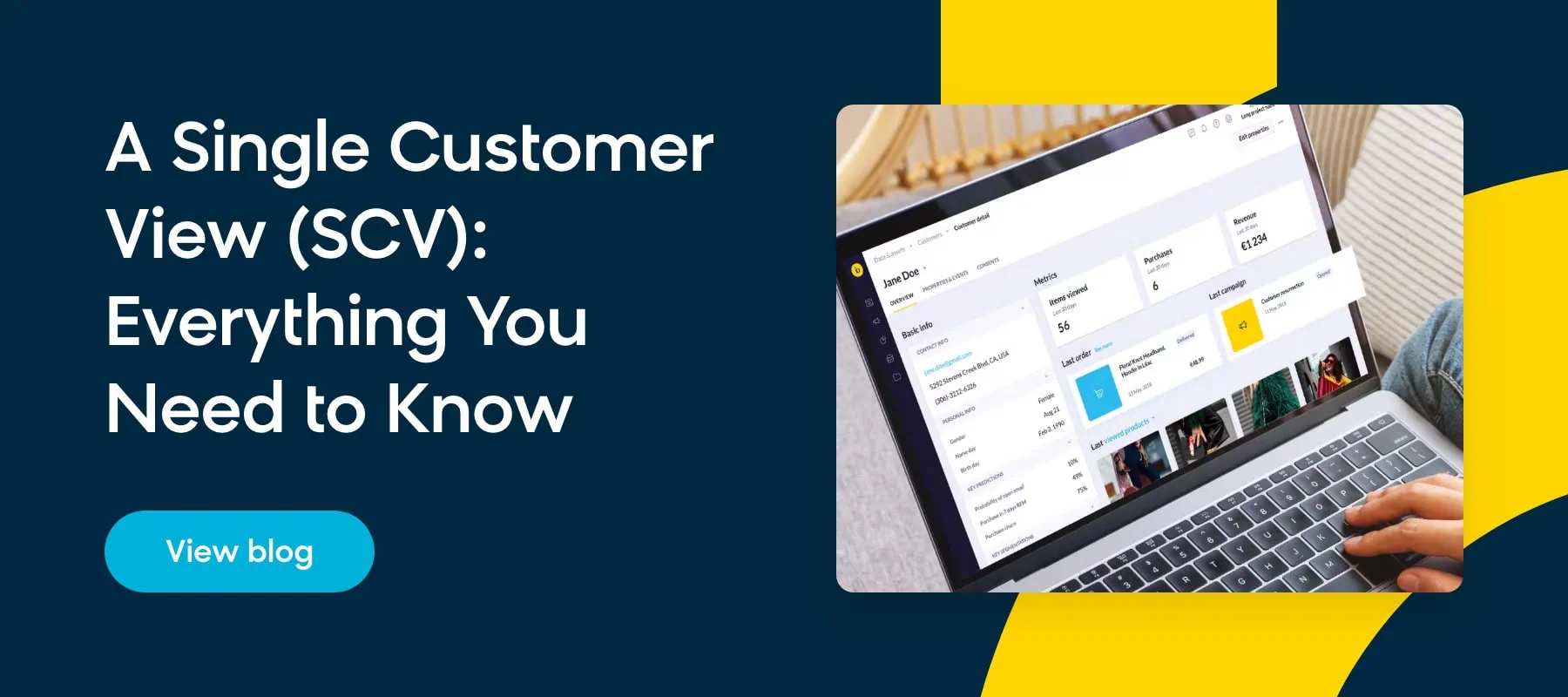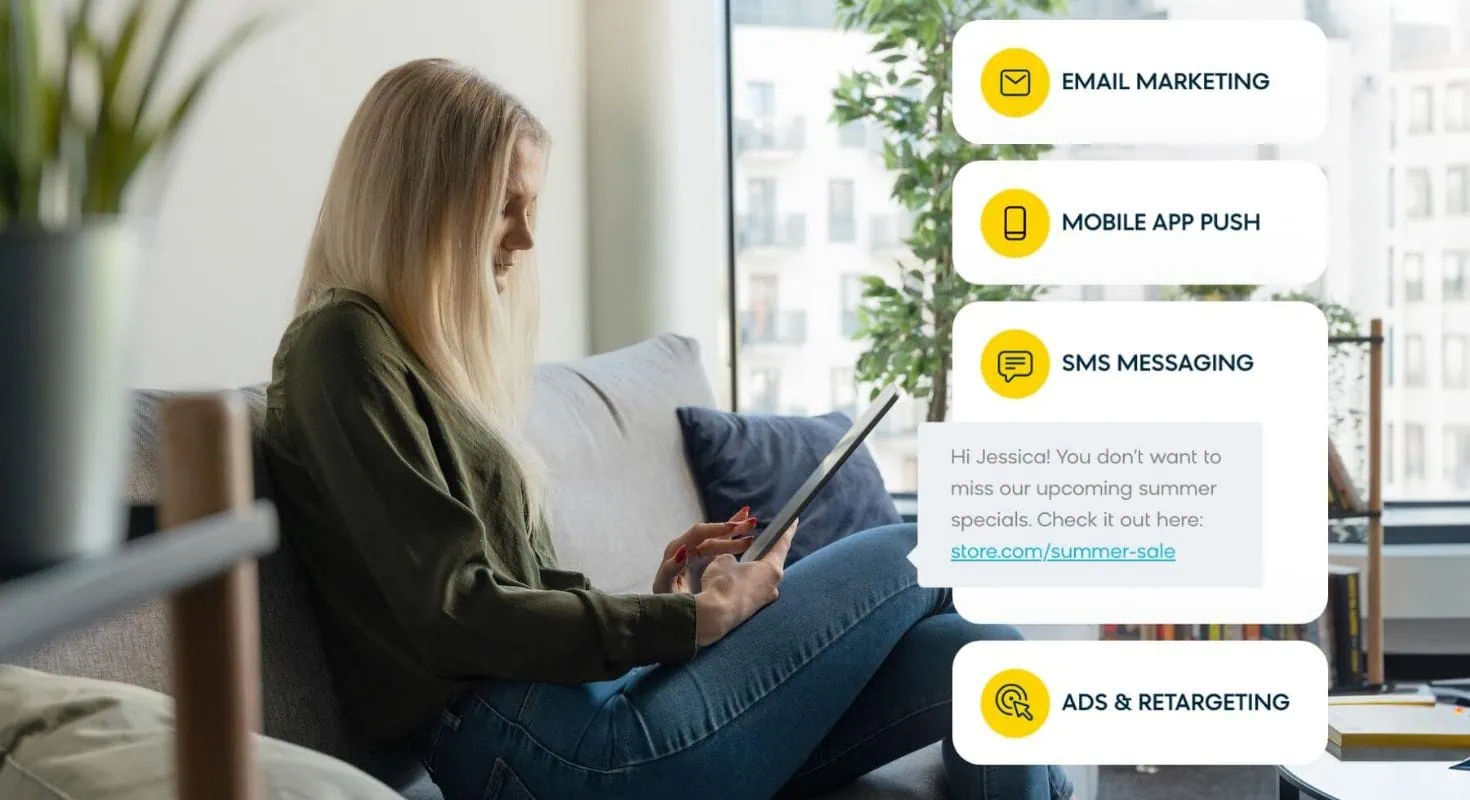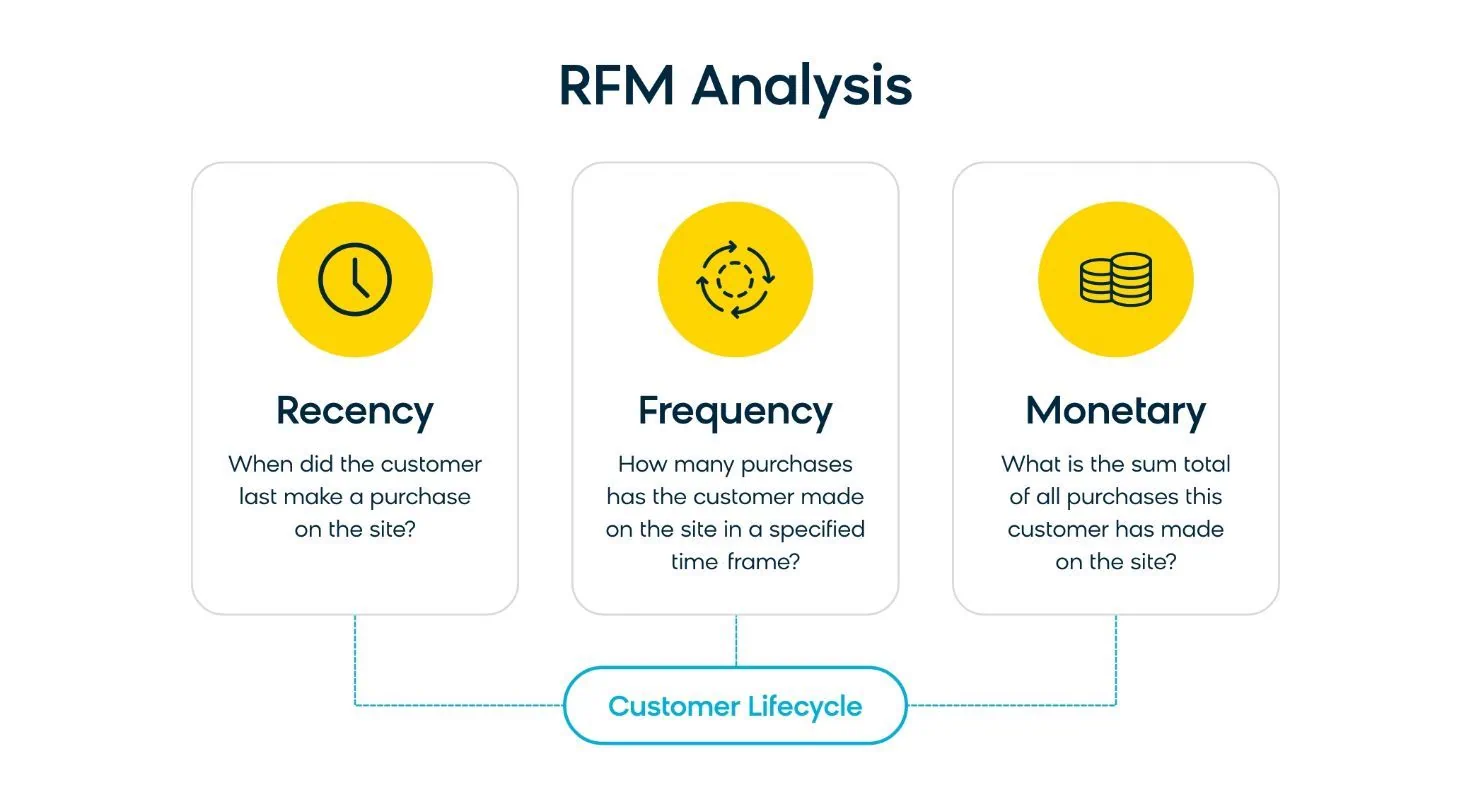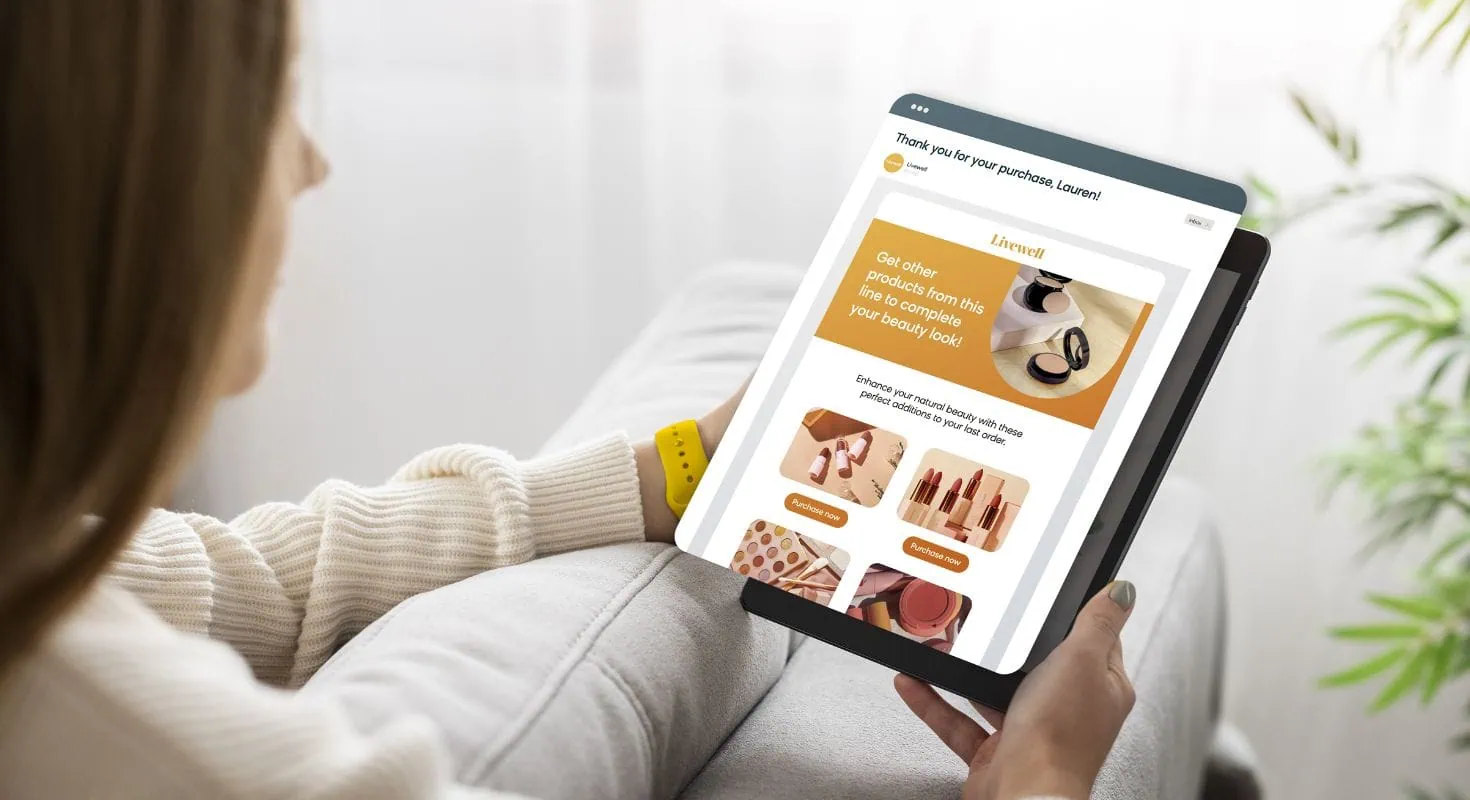In today’s competitive business landscape, it’s not enough to merely attract new customers. You need to keep them, you need to wow them, and you need to inspire them to become loyal, long-lasting customers.
No matter what industry or niche market you’re aiming for, your marketing strategy needs to build customer loyalty and make sure shoppers are more than just one-time buyers.
But what exactly is customer loyalty? Why is it so important for success, and how can you increase it?
Keep reading to learn everything you need to know about fostering customer loyalty and retaining your most lucrative audience.
What Is Customer Loyalty?
Customer loyalty is a measure of a customer’s willingness to continually do business with a company or brand. It reflects how much a customer trusts your business and how committed they are to purchasing your products or services over those of competitors.
But customer loyalty is more than just repeat business. A loyal customer doesn’t just buy a product again and again. They form an emotional connection with a brand — they trust it, believe in it, and even advocate for it. They choose a brand consistently, even when there are other cheaper or more convenient options available.
In other words, loyal customers aren’t just customers. They’re brand champions. And that’s an invaluable asset for your business.
Why Is Building Customer Loyalty Important?
In the world of business, customer loyalty is like gold. It’s precious, hard to come by, and incredibly valuable. Here’s why:
Loyal Customers Spend More
First and foremost, loyal customers do exactly what you expect them to do: make repeat purchases, increasing your company’s revenue without the added expense of attracting new customers.
New customers can be more expensive than many marketers realize. Acquiring new customers costs 5 to 10 times more than selling to a current customer, and current customers spend 67% more on average than those who are new to your business.
Plus, once customers develop loyalty to a brand, they’re more likely to choose it over others, even if it means spending a little extra. More than 50% of consumers are loyal to businesses simply because of their preference, regardless of the price.
Loyal Customers Bring in New Customers
Loyal customers don’t just frequent your brand — they actively promote it. They’re your brand advocates who sing your business’ praises, write glowing online reviews, and recommend your products or services to their friends and family.
The influence that loyal customers have on their peers is no small asset to your brand. More than 80% of consumers say they trust recommendations from people they know, which is more than any other advertising format.
Loyal Customers Provide Valuable Customer Feedback
Loyal customers care about your brand, and they’re more likely to provide constructive customer feedback that can help you improve your products or services.
These are the customers who want to see your brand succeed and will give you their opinions on how you can make the customer experience better. Their criticism can be a valuable look into what works best for your business, what doesn’t, and where you can improve to meet the needs of your most important customers.
Loyal Customers Are Less Sensitive to Price Changes
When customers are loyal to a brand, they’re less likely to be swayed by price changes. They understand the value they’re getting and are willing to pay for it.
Price is always a major factor in fostering brand affinity. But once a shopper becomes a loyal customer, you can count on them to weather price fluctuations and stay loyal to your business. 59% of American consumers say that once they’re loyal to a brand, they’re loyal to it for life, making longstanding customers a lucrative audience.
The Crucial Link Between Customer Loyalty and Retention
Now that we’ve established how important customer loyalty is to your business, let’s get to the question every marketer wants to solve: How can you build customer loyalty?
The answer is simple: Make your customers feel as special and important as they truly are. You need to make customer retention a priority.
Customer retention refers to the strategies and actions companies take to prevent customers from defecting to competitors. It’s all about keeping your customers coming back for more and actively engaging with them to foster true loyalty.
This is the key to turning repeat shoppers into your most loyal customers. Customer loyalty is earned by providing value, engagement, and attention, which your business should be building consistently. Brands build lasting customer relationships by continually meeting or exceeding their audience’s expectations, offering value beyond the product or service itself, and making them feel appreciated.
When done right, successful customer retention strategies not only engage customers in worthwhile ways but also transform them into loyal advocates for your brand.
Read This Next: Customer Engagement Explained
How To Increase Customer Loyalty and Retention
So, how do you cultivate relationships that build customer loyalty? What do you need to inspire your existing customers to become a committed group of loyal fans?
Here are some important steps to take to get started:
Unify Your Customer Data
To create long-lasting customer loyalty, you first need to know your customers on an individual level. This requires consolidating all your customer data in one unified place so you can fully comprehend each customer’s relationship with your brand.
A 360-degree view of each of your customers, or a single customer view, is essential.
With a single customer view of each customer, you have a database of customer profiles where all their most pertinent data is stored — their interactions with your brand, their preferences and contact information, their recent purchases and preferred communications channels, and more.
With all this valuable data in one unified place, you can act on this information with relevant, targeted campaigns.
Read This Next: A Single Customer View (SCV): Everything You Need To Know
If you don’t know basic customer attributes, like whether they’re a first-time shopper or a loyal customer, you can’t cater to their unique needs. And consistently meeting the individual needs of your customers is your best bet for a long and prosperous relationship.
A customer data platform (CDP) provides that single customer view — a foundation that your customer loyalty strategy can build on to gain a complete understanding of each customer, their touchpoints with your business, and their buying habits and preferences. When all this data is unified in a single source of truth, you can fully understand your audience and paint a clear picture of what their ideal engagement looks like.
Adopt an Omnichannel Communication Strategy
Reaching your customers on the right marketing channel can be a challenge in today’s digital landscape.
Modern shoppers don’t just head to your brick-and-mortar store or visit your website on a whim — they use multiple devices, apps, and channels to interact with their favorite brands. And if businesses want to retain this modern audience, they need to be ready and able to connect with people on the right channel.
Aligning all your channels with an omnichannel engagement strategy is key to reaching these customers, retaining their business, and building customer loyalty. This multichannel approach to marketing and customer service is all about delivering experiences that are relevant, timely, and valuable to the customer.
Your customers expect a consistent and cohesive brand experience across all touchpoints. To do this, you need to integrate all your communication channels — from email and SMS campaigns to your website and physical stores — to provide a seamless, consistent customer experience.
Once you connect all your channels, customers can interact with your brand when, where, and how they prefer. This convenience can significantly increase customer satisfaction, which in turn will boost retention and loyalty.
Read This Next: How To Create an Omnichannel Customer Engagement Strategy
Harness Customer Segmentation and Lifecycle Management
To activate your unified customer data with an omnichannel communication strategy, you need to group your audience into relevant customer segments.
Customer segmentation is the process of dividing a target market into distinct groups based on specific characteristics, behaviors, or preferences. Grouping your customers by similar attributes can help you fine-tune your marketing campaigns to target the right audience with the right message.
The best way to approach this segmentation process is to look at each stage of the customer lifecycle, identify where your audience is in their customer journey with your brand, and market to them accordingly.
Taking the time to create relevant customer segments allows companies to ultimately create more targeted messaging. And it’s an invaluable step for retaining loyal customers, which is a crucial stage in any business’ customer lifecycle, no matter the industry.
A simple RFM analysis — one of the most widely adopted and effective customer segmentation methods — can help you identify your most valuable customer segments, enabling you to allocate your resources efficiently and target your most loyal customer base.
- Recency tells you when a customer last made a purchase on your website
- Frequency shows you how many purchases a customer made on your site in a specified time frame
- Monetary calculates the sum total of all purchases a customer made on your website
Using this value-based customer segmentation method, you can determine which lifecycle stage your customer is currently in — whether they’re a brand champion, a loyal customer, or an at-risk customer in danger of churning.
Once you have your customers segmented properly, you’re ready to offer the level of marketing experiences that all your customers — and especially your most loyal ones — expect.
Personalize Your Marketing Campaigns
Now that your data is consolidated, your channels are working together, and your audience is segmented into relevant groups, you’re ready to offer your customers a personalized experience with your brand. This is the pinnacle of customer engagement and the best way to build customer loyalty.
Personalized marketing is crucial for turning existing customers into loyal brand advocates. It achieves the ultimate goal of retention: making customers feel valued and seen as individuals, rather than just another face in the crowd of your target audience.
By creating, orchestrating, and delivering personalized campaigns, brands build a customer journey in which shoppers feel recognized. It makes the relationship they have with your brand feel like a beneficial, two-way connection, not just a monetary exchange where all you care about is the amount they spend.
When you recommend products they might be interested in based on their past purchases, send individualized offers, or provide relevant content that adds value to their relationship with your brand, you’re investing in their customer satisfaction. Modern shoppers will appreciate this and return to your brand for a personalized experience — 78% of consumers are likely to become repeat customers from companies that personalize their experience, which puts them on the path to becoming a loyal customer base.
Put simply, personalization is the best way to inspire your customers to engage with your brand. And that inspiration can make all the difference when it comes to customer loyalty.
AI’s Crucial Role in Building Customer Loyalty
Bringing all these loyalty-building aspects together might sound like a herculean task for marketers. But with the right AI-powered technology, you can build a customer experience that leverages all your data, channels, and campaigns to keep existing customers coming back to your brand.
AI offers the ability to reach your customers with the speed and scale required in today’s modern marketing landscape. It’s the linchpin that makes true personalization possible.
But to do this, you can’t just tack AI onto your strategy — it needs to be woven into your marketing efforts, playing a central role in key operations.
You need consequential AI to craft an above-and-beyond customer experience, influence buying decisions at critical points, and build customer loyalty.
Using Consequential AI For Lasting Loyalty
With AI connecting every element of your marketing ecosystem, marketers don’t need to waste time and energy monitoring, updating, and refining campaigns with each new click, add to cart, and purchase. You can trust AI to do this heavy lifting for you — it can manage and guide relationships with your most loyal customers, automatically serving messages that adapt to their growing needs.
AI can translate customer data into personalized experiences across omnichannel campaigns, meeting modern shoppers when and where it counts.
It can help you instantly create dynamic, real-time customer segments, grouping customers based on up-to-the-minute characteristics or actions.
Plus, all of your personalized touchpoints can be automated — product recommendations, content suggestions, tailored promotions, and more — without the need to spend endless hours on manual configurations.
This level of efficiency allows marketing teams to focus on what matters most: crafting a rock-solid strategy that makes every customer feel connected and encouraged to continue their shopping journey.
Reach Your Customer Loyalty Goals With Bloomreach
If you’re looking to build customer loyalty, Bloomreach Engagement is the all-in-one marketing platform you need to reach your goals.
With our solution, you can deliver truly engaging loyalty campaigns, create a personalized retention strategy, and so much more. Powered by Loomi AI, our AI for ecommerce, Bloomreach can deliver the exact right message to the right customers at the right time — every time.
That’s the expectation of modern shoppers, and the gold standard that your customer loyalty strategy should strive for.
If you’re ready to dive deeper into your loyalty strategy and take your loyalty game to the next level, check out our Winning Playbook for the New Era of Customer Loyalty. Inside you’ll find all the know-how you need to succeed, from understanding rising customer expectations to the strategies and tools to meet them.
